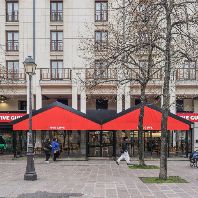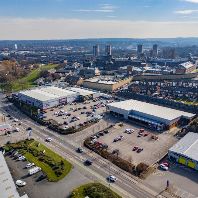Germany's mid-sized cities offer particularly attractive conditions for retailers and consumers according to GfK GeoMarketing's 2011 retail turnover prognosis. Many such mid-sized cities serve as retail supply hubs for the surrounding rural areas and consequently attract purchasing power from beyond their borders.
According to calculations by GfK GeoMarketing, Germany's 2011 stationary retail turnover will rise slightly from the previous year's level to 406 billion. The 'GfK Retail Turnover 2011' study forecasts turnover at the point of sale and serves as an important benchmark among retailers for branch network and expansion planning as well as controlling.
"This is a positive sign for the retail sector, which has an opportunity in 2011 to capitalize on Germans' increased purchasing power," says Oliver Giehsel, retail expert at GfK GeoMarketing. "However, one point of uncertainty is the extent to which the price increases in 2011 will dampen Germans' willingness to spend - high inflation would negatively affect retail turnover levels."
GfK GeoMarketing's study calculates regional retail turnover levels for all of Germany's municipalities, cities and regional levels with more than 10,000 inhabitants. In terms of absolute values, large cities generate - as would be expected - large turnover volumes.
However, some urban districts have significantly above-average retail turnover levels when the figures are adjusted according to the size of the population: In terms of turnover per inhabitant, Munich is the clear front-runner among Germany's large cities (turnover index of 151.1; 100 = national average), followed by Düsseldorf (index: 144.6), Nuremberg (index: 139.7), Stuttgart (index: 137.6) and Cologne (index: 135.9).
However, mid-sized cities emerge as the clear winners when per capita turnover levels are compared: These locations draw proportionally even more purchasing power than Germany's metropolises. The top five mid-sized cities of Straubing, Weiden, Passau, Schweinfurt and Rosenheim all located in the federal state of Bavaria generate per-capita turnover levels twice that of the national average. This means that these cities draw purchasing power from well beyond their boundaries, leading to turnover levels significantly higher than the retail purchasing power of the cities' inhabitants alone.
Important note: These figures are purely mathematical benchmarks. Retail trade at any given location is not generated by the local inhabitants alone. Nonetheless, the figures do provide an indication of the retail drawing power of individual areas.
"Mid-sized cities owe their particularly high drawing power to their status as key shopping venues for the surrounding, often rural areas," explains Giehsel. "Successful city development schemes have also helped foster an attractive retail landscape that is stopping the outflow of purchasing power to the larger cities. Simultaneously, there is huge demand by retailers, who see opportunities for growth in these mid-sized locations, while the retail scene in many large cities has often already reached saturation."
Source: GfK Geomarketing














